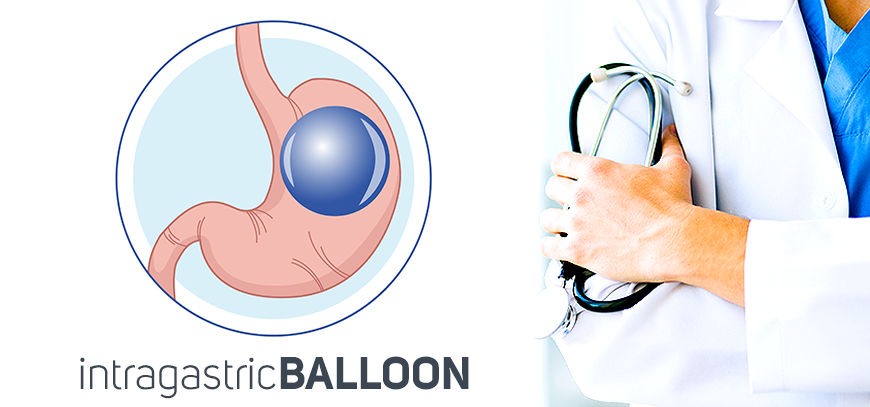Working Time
- Mon-Fri… 09:00 – 19:00
Saturday 09:00 – 14:00
Contact Info
-
Phone: +52 663 158-6186
Ask Dr. Ismael Bailon
Intragastric Balloon

At The Center for Bariatrics in Tijuana, Mexico, the intragastric balloon is a new, minimally invasive bariatric treatment for people with obesity.
The balloon is a medical implant that Dr. Ismael Bailon places in your stomach to restrict its capacity for a limited time. Dr. Bailon uses an endoscope to pass the balloon down your throat, so there’s no surgery involved.
What is the intragastric procedure?
The intragastric balloon system is a minimally invasive medical weight loss program for people with obesity. It combines long-term diet and lifestyle changes with a short-term medical implant.
The implant is an inflatable balloon that Dr. Ismael V. Bailon places nonsurgically inside your stomach (which is what “intragastric” means).
It works by taking up space, making you feel full and restricting how much you can eat.
Why is this treatment needed?
When you have obesity, your body changes in ways that make it increasingly hard to lose weight by diet and exercise alone. One of those changes is that the volume of your stomach expands over time.
As your stomach stretches, it holds more food and takes longer for you to feel full, which leads to eating more. This is why all medical weight loss procedures restrict the capacity of your stomach by some means.
The intragastric balloon offers an important alternative to the other available procedures. First, it’s the only procedure that’s designed to be impermanent. Second, it doesn’t require surgery to install it.
This procedure doesn’t require general anesthesia, either. This makes it a viable option for those who either don’t meet the qualifications for bariatric surgery or are looking for a lesser commitment.
Who is intragastric balloon therapy for?
The intragastric balloon is currently offered to people with a BMI of at least 30 who pass the health screening for the procedure. People with class III obesity who qualify for bariatric surgery may choose the balloon instead for its relatively low risks.
People whose obesity makes surgery unsafe for them may use the balloon as a bridge procedure to lose enough weight to qualify for surgery.
What health conditions does the intragastric balloon treat?
Obesity causes metabolic changes that lead to a wide range of health conditions, from Type 2 diabetes and cardiovascular disease to kidney and liver diseases.
If you have a BMI of 30 or more, you’re at a high risk of developing these diseases. But on the flip side, weight loss of just 5% to 10% reduces this risk and can even cause remission of these conditions. You can achieve this with the intragastric balloon system.
How much weight can you lose with a gastric balloon?
Average weight loss with the gastric balloon is about 10% of your total weight or about 30% of your excess weight. That’s enough to make a life-changing impact on your health in a short period.
As with any weight loss system, you can lose more or less depending on how well you stick to the program. You can also regain the weight you lost if you don’t stick to the program after the balloon is removed.
How common is this procedure?
The intragastric balloon is the newest FDA-approved medical procedure for weight loss. The U.S. Food and Drug Administration approved the first model, the Orbera®, in 2015.
Dr. Ismael Bailon recommends this model the most because it has the most research behind it.
Endoscopic bariatric therapy in general is still new, but the intragastric balloon is the most commonly performed endoscopic bariatric procedure.
You will consult with Dr. Eduardo Cardenas to determine if you’re a good fit for the intragastric balloon system. If you are, your Dr. Cardenas will assemble a team of caregivers to support you through the program.
Dr. Eduardo Cardenas inserts most intragastric balloons using an endoscope. An endoscope is a long, flexible tube with a camera attached. It goes in through your mouth and passes down through your esophagus to reach your stomach. Most people have this procedure while awake, but with a mild sedative.
Your stomach will need time to adapt to the balloon before you resume your regular diet. You will ll start with a liquid diet and gradually advance to pureed foods, followed by a soft diet, and finally, the long-term diet designed by your nutritionist. You will ll stay in close contact with Dr. Cardenas during this time.
